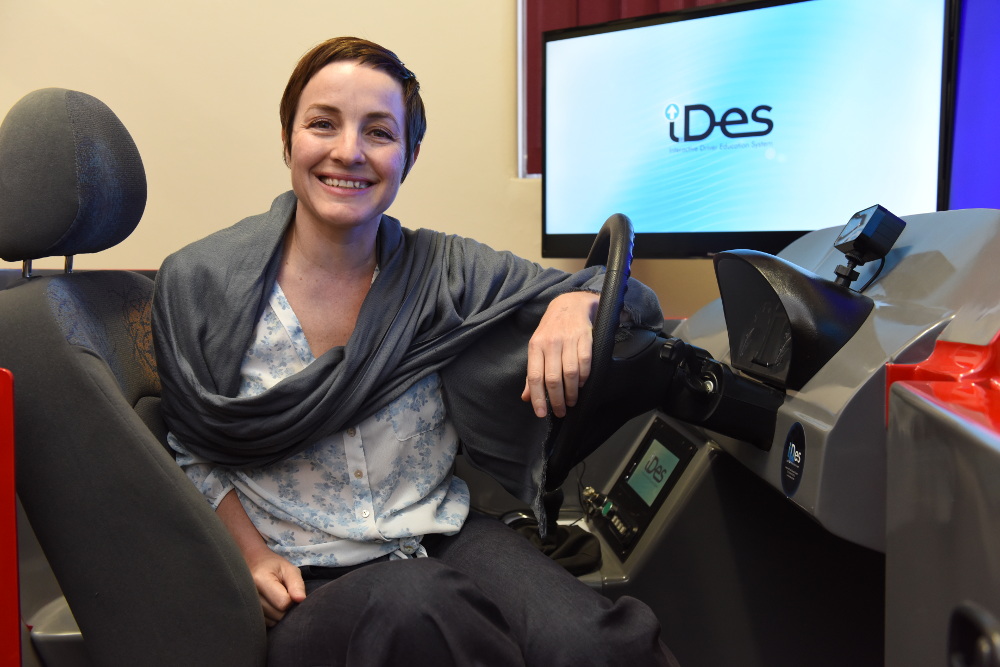Fostering collaboration for road safety
In 2016, South Africa saw its highest number of road deaths in 10 years. Just over 14 000 people died on South Africa’s roads that year, according to the Automobile Association of South Africa (AA). In 2015, that number stood at just under 13 000 – also unacceptably high. To address this crisis, researchers and policymakers need to understand the behaviour of road users, including driver behaviour. Interdisciplinary research to understand the behaviour of drivers is in the pipeline at UCT, thanks to a connection made by UCT eResearch between researchers from two different campuses, and two entirely different fields of research: psychiatry and engineering.

Dr Hetta Gouse, chief research officer in the Department of Mental Health, is using a driver simulator to better understand driver behaviour.
In order to better understand the cognitive effects of certain chronic conditions on commercial drivers, Dr Hetta Gouse, chief research officer in the Department of Psychiatry and Mental Health, acquired a driver simulator in 2015. This driver visualisation tool is key to her research into driver behaviour in specific simulated road-use scenarios. But her pilot study presented a few obstacles, as far as software for the simulator was concerned.
“We ran a pilot study in 2016, and were simply not happy with the software provided by the company from which we sourced the simulator, or the support we received,” says Gouse.
Finding the right software
Gouse eventually found the best software solution to be one provided by a US-based company, Systems Technology Inc, which specialises in the development of virtual-reality software for driver simulators, offering a range of road challenges to measure driver performance.
“Their software, STISIM Drive, proved a particularly good solution, because it’s relatively easy to write your own programs,” says Gouse.
But there was a challenge in terms of the cost of the US software, and it was here that Gouse reached out to UCT eResearch to find out if they could help. eResearch director Dr Dale Peters introduced Gouse to Associate Professor Marianne Vanderschuren, in the Department of Civil Engineering.
Connecting researchers: collaborating for software acquisition
“Marianne had been part of the academic reference group established to assess research needs in data visualisation,” explains Peters. “By a stroke of serendipity, UCT eResearch was aware of her interest in driver simulation as a visualisation tool in road design and construction, and knew there would be synergy with Hetta’s work.”
Vanderschuren quickly saw the value in the driver simulator for her own research and put in a grant application to help fund the cost of the software. Between them, they managed to successfully fund the software necessary to run the simulator.
They now also have a research collaboration in the pipeline. Together, Gouse and Vanderschuren plan to study the differences between first-generation drivers – those whose parents did not drive – and second-generation drivers, who grew up with parents comfortable behind the wheel.
In the meantime, Gouse has secured a second developmental grant from the HIV Neurobehavioural Research Programme – this one to look at the impact of HIV and ageing in the workplace in a study of professional drivers.
“As we learn more about the neurocognitive impact of certain chronic conditions on the central nervous system, it is also important to understand the behavioural aspects that go with it, particularly where safety is a concern. This is particularly important in developing policy around driver management of both private and commercial drivers.”
